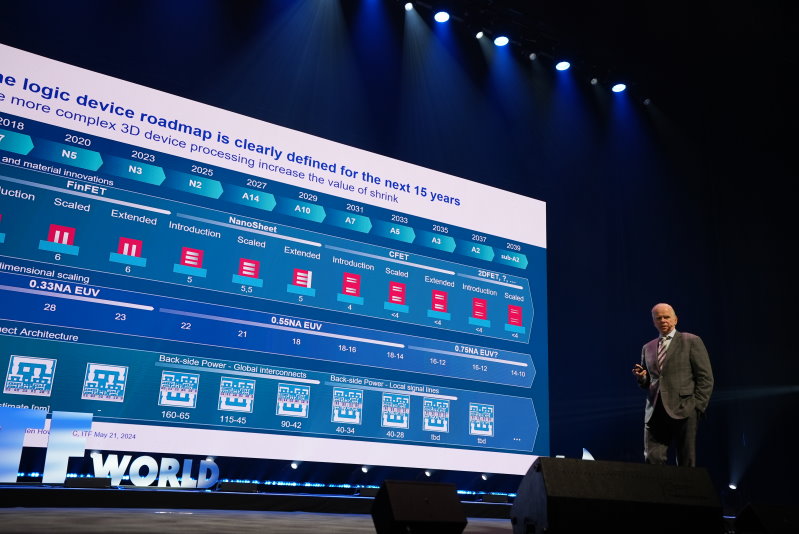
ASML eyes common EUV platform and massive throughput increases
ASML CTO emeritus Martin van den Brink has shared a “vision” of a common EUV platform, which could include a 0.75-NA ‘hyper-NA’ tool. Additionally, the litho firm aims to raise the productivity of both DUV and EUV tools to 400-500 wafers per hour, up from roughly 200-300 wafers per hour. “This is our major weapon against cost increases,” Van den Brink said at the Imec Technology Forum (ITF) in Antwerp, addressing concerns voiced by previous speakers.

The common EUV platform is tied to the development of the hyper-NA tool since standardization and the ability to introduce hyper-NA innovations into previous EUV generations help recoup the investments needed to develop the hyper-NA tool. “We’re proposing a long-term roadmap where – let’s say ten years from now – we’ll have a single platform of low-NA, high-NA and hyper-NA EUV systems,” said van den Brink. The decision to go ahead with hyper-NA has not been made, an ASML spokesperson told Bits&Chips.
Industry legend Van den Brink, who recently stepped down as CTO but is still employed by ASML in an advisory role, explained that the availability of an even higher resolution tool will reduce the need for double patterning, thereby reducing the number of process steps and the amount of energy needed per wafer. “Hyper-NA allows us to stay away from the dangerous complexity of double patterning.”
With this remark, Van den Brink touched on questions that have been raised about the urgency of hyper-NA’s predecessor, high-NA. According to market research firm Semianalysis, high-NA can’t compete on cost with low-NA double patterning. ASML has previously countered that analysis by pointing out the value of reduced process complexity through the avoidance of double patterning. Furthermore, the industry’s appetite for high-NA tools is “healthy,” the firm said. Once hyper-NA gets the green light, any doubts about high-NA will probably quickly vanish.
Editor’s note: this article, originally titled “It’s official: high-NA EUV will get a successor,” has been corrected to reflect that a go-no-go decision about hyper-NA has, in fact, not yet been made. Van den Brink’s remarks about throughput have been added.





